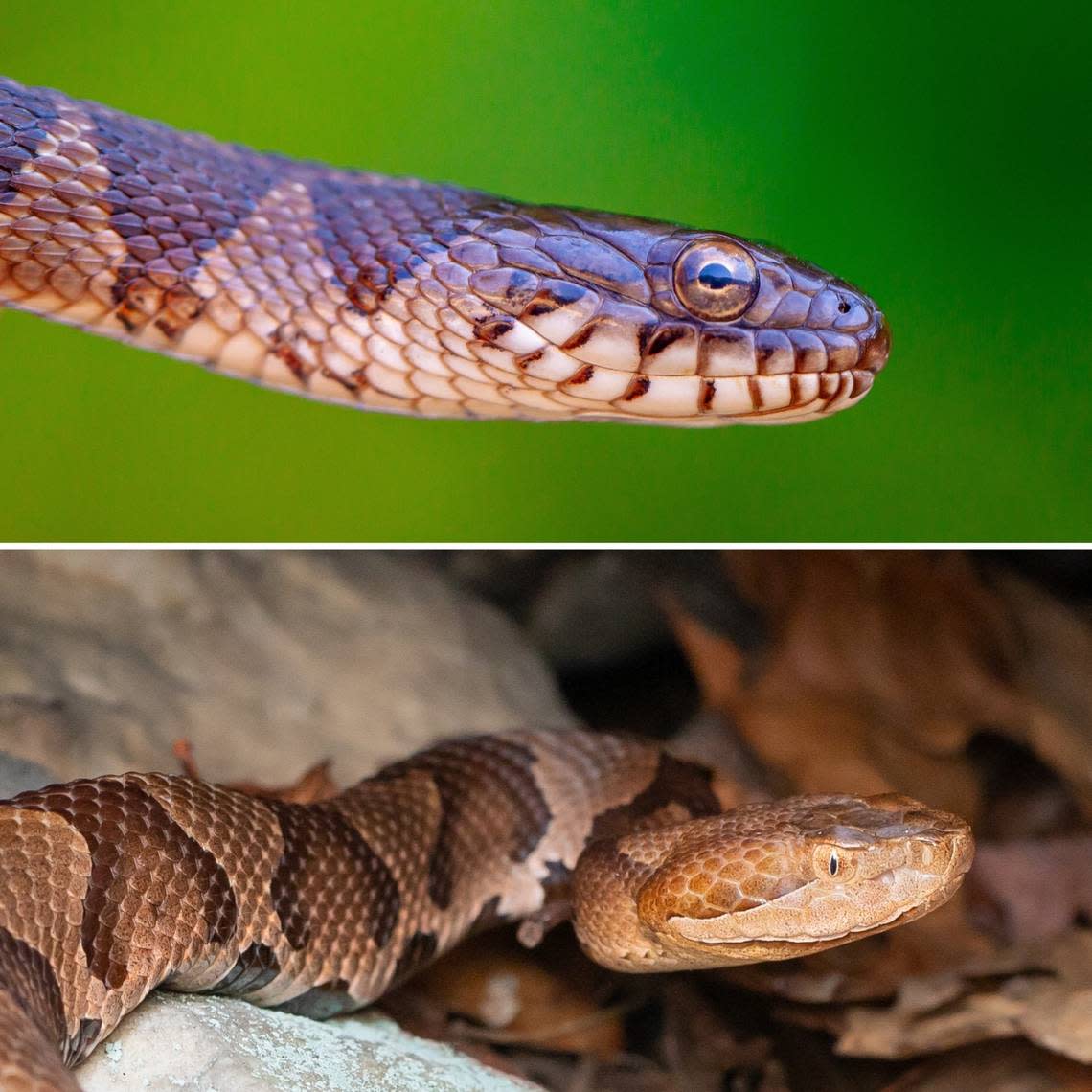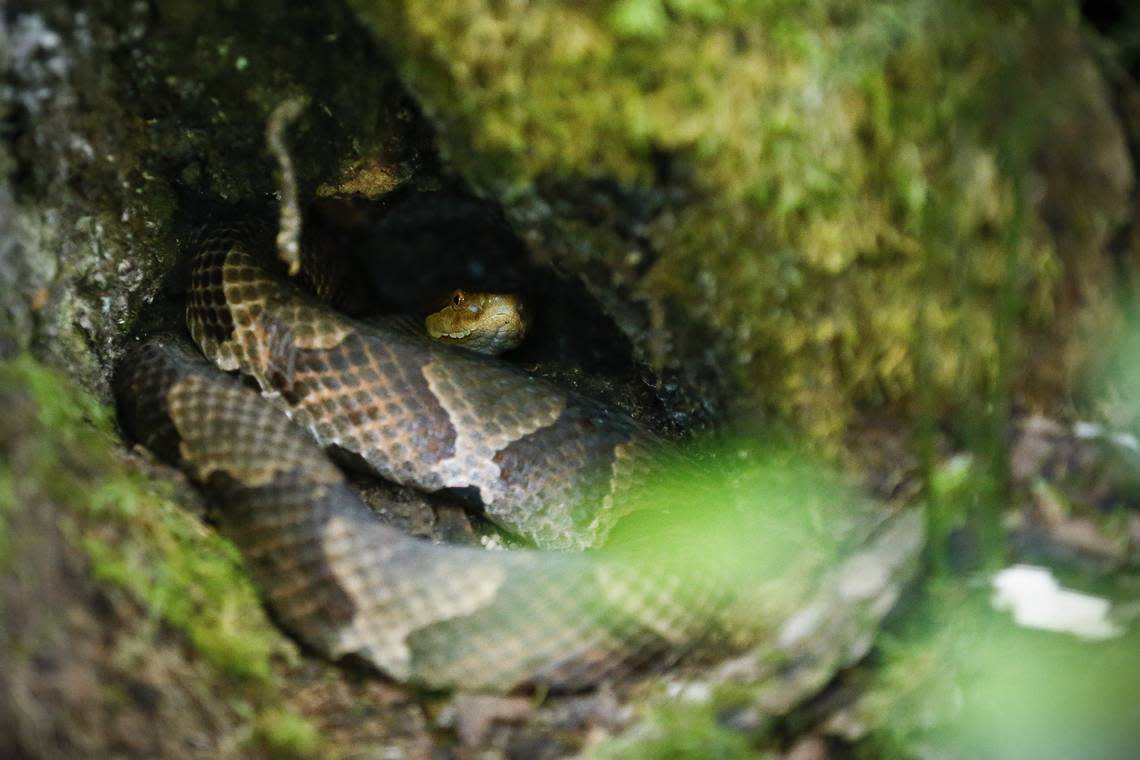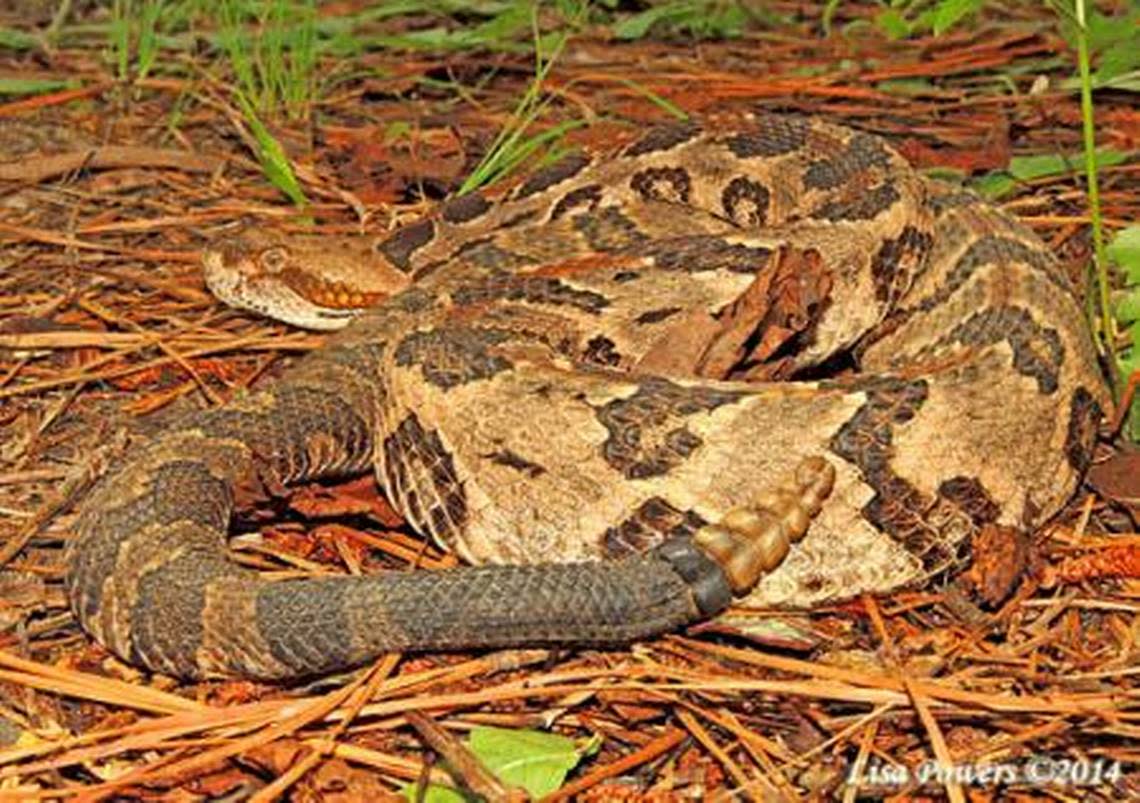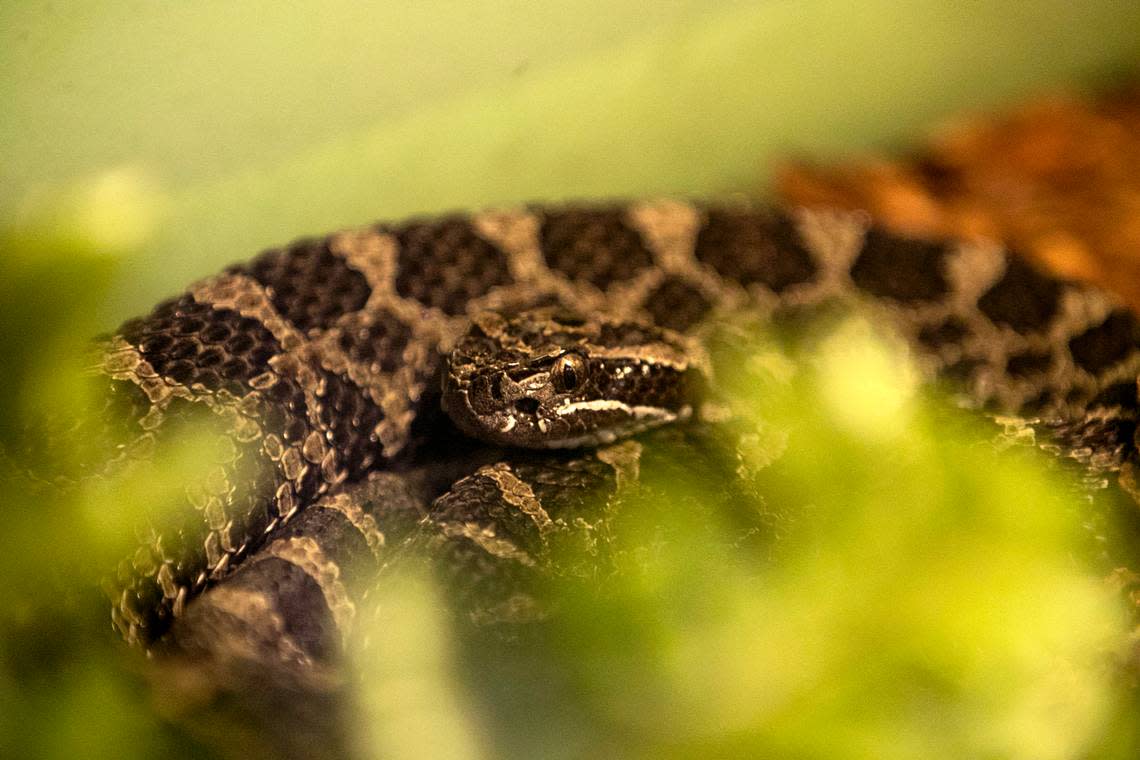Pennsylvania is home to 3 types of venomous snakes. Here’s how to spot them
In summer it’s not uncommon to find a snake or two curled up under your porch or around your woodpile. But there’s no need to call in the cavalry, nearly all of Pennsylvania’s 21 species of snakes are harmless.
Julian Avery, associate research professor of wildlife ecology and conservation at Penn State, said most snakes in Pennsylvania pose no threat, venomous or not.
“The rat snake and the garter snake are probably the most common around urban areas, around suburban places where people live,” Avery said. “It’s not uncommon at all to find rat snakes in basements or in the suburbs.”
Snakes help control mice populations and other pests, so if they aren’t a bother there’s no real need to remove them, Avery said.
The best way to get a snake out of a garage or basement is to lay down a pillowcase and gently coerce the snake onto the pillowcase, pick it up at the corners and take the snake outside.
If you aren’t sure what type of snake it is, leave it alone and ask professionals before handling it.
Venomous snakes in PA
Pennsylvania has three species of venomous snakes: the copperhead, the timber rattlesnake and the eastern massasauga. Only the copperhead and the timber rattlesnake are found in the central Pennsylvania area.
There are several ways to identify venomous snakes, including pupil size, head shape and pattern. But in Pennsylvania, a good way to tell if one of the native snake species is venomous is the scales.

Copperheads and rattlesnakes have ridged scales, making them appear more textured and have a matte or non-shiny appearance.
Avery doesn’t suggest looking at the head shape to determine a snake species, as some nonvenomous species will flatten their heads to appear more dangerous to predators.
“Going by head shape and killing something based on head shape is oftentimes the worst thing you could do because nine times out of 10 is going to be totally harmless,” Avery said.
Copperhead

Copperheads are the most common venomous snake in Pennsylvania and are often attracted to rocky outcrops and wooded hillsides. Copperheads are most identifiable by their pattern of scales.
“The key for copperheads is that the pattern makes an hourglass so it starts fat on either side of their body and gets skinny across the backbone, and then fat back out on the other side,” Avery said.
Timber rattlesnake

Timber rattlesnakes are either black or yellow in color and are found on rocky ridges. Although they do have a rattle, they won’t always use it before striking.
Rattlesnake scales look like a chevron pattern and give an almost velvety texture, Avery said.
Eastern massasauga

The eastern massasauga is Pennsylvania’s smallest venomous snake and lives only in wetland fields. They’re characterized by large spots on their backs, with smaller spots along the sides.
The species is considered threatened and found in only two places in Pennsylvania, making them very rare in the state.
What to do if you encounter a snake
Avery said the places people are most likely to encounter one of the area’s venomous species is on high, rocky outcroppings or areas with heavy forest coverage. Even if you do spot a snake while out hiking, you’re not in great danger.
Both the copperhead and timber rattlesnake are not aggressive and usually bite as a last resort.
“The neat thing about both of those species is that they’re incredibly docile…” Avery said. “Those two species are incredibly chill. On Saturday, I walked right by one and didn’t see it. My leg was probably about three inches from it.”
Although copperheads can be found in central Pennsylvania, Avery said he rarely sees them, even when he’s out looking for snakes.
“When you’re in rattlesnake country and you’re walking along the trails just keep an eye on the long trails so that if you do see them, you just go around them no more than a snake’s body length away.”
Although snakes get a bad rap, they can be beautiful with their bright colors and distinct patterns. Avery suggests people pay attention and look out for them while hiking or outdoors, but keep a safe distance.
“The copperheads around here are usually really colorful, I think probably our prettiest animal in Pennsylvania,” Avery said. “Some of them just have this really, really nice orange, maroon pattern.”
